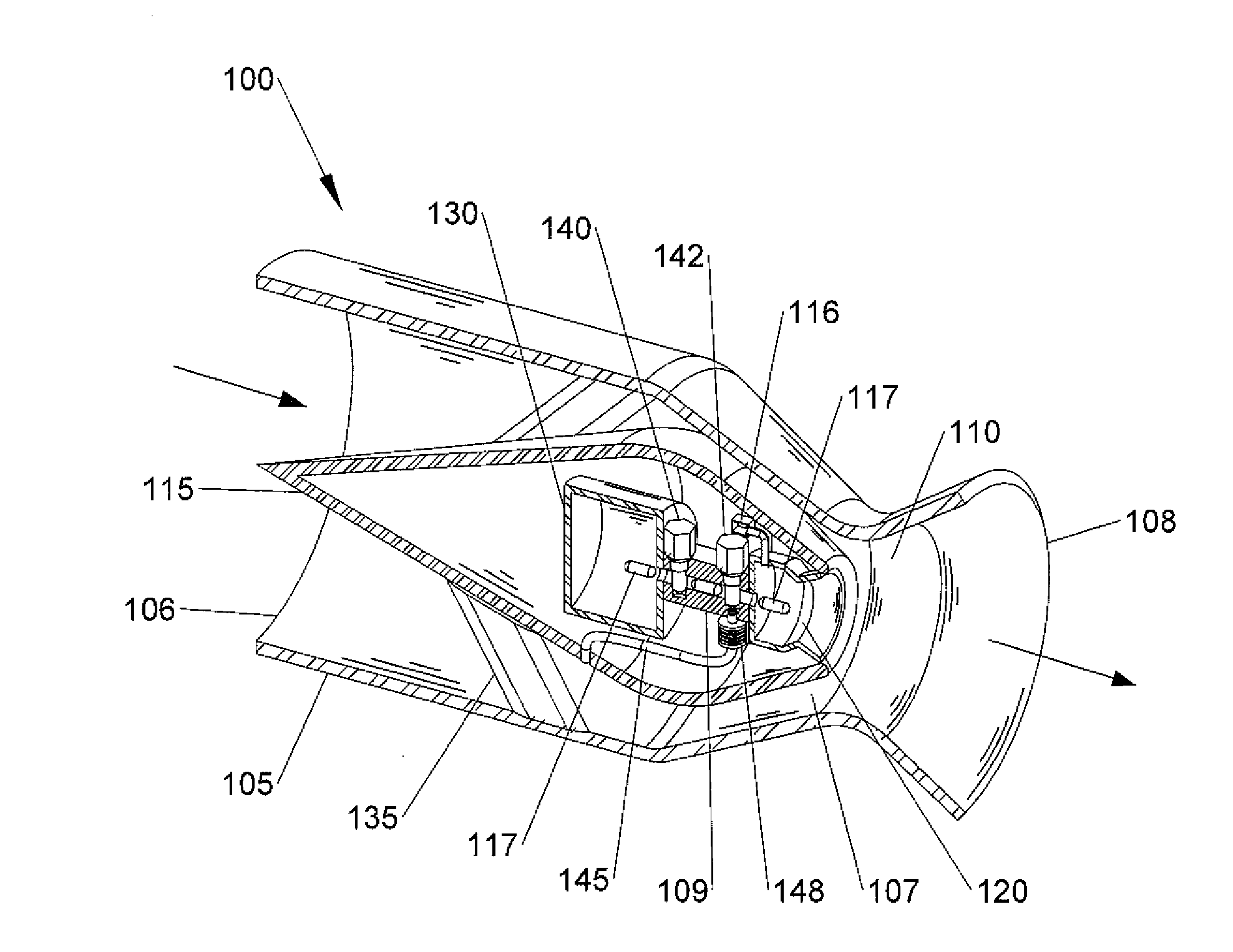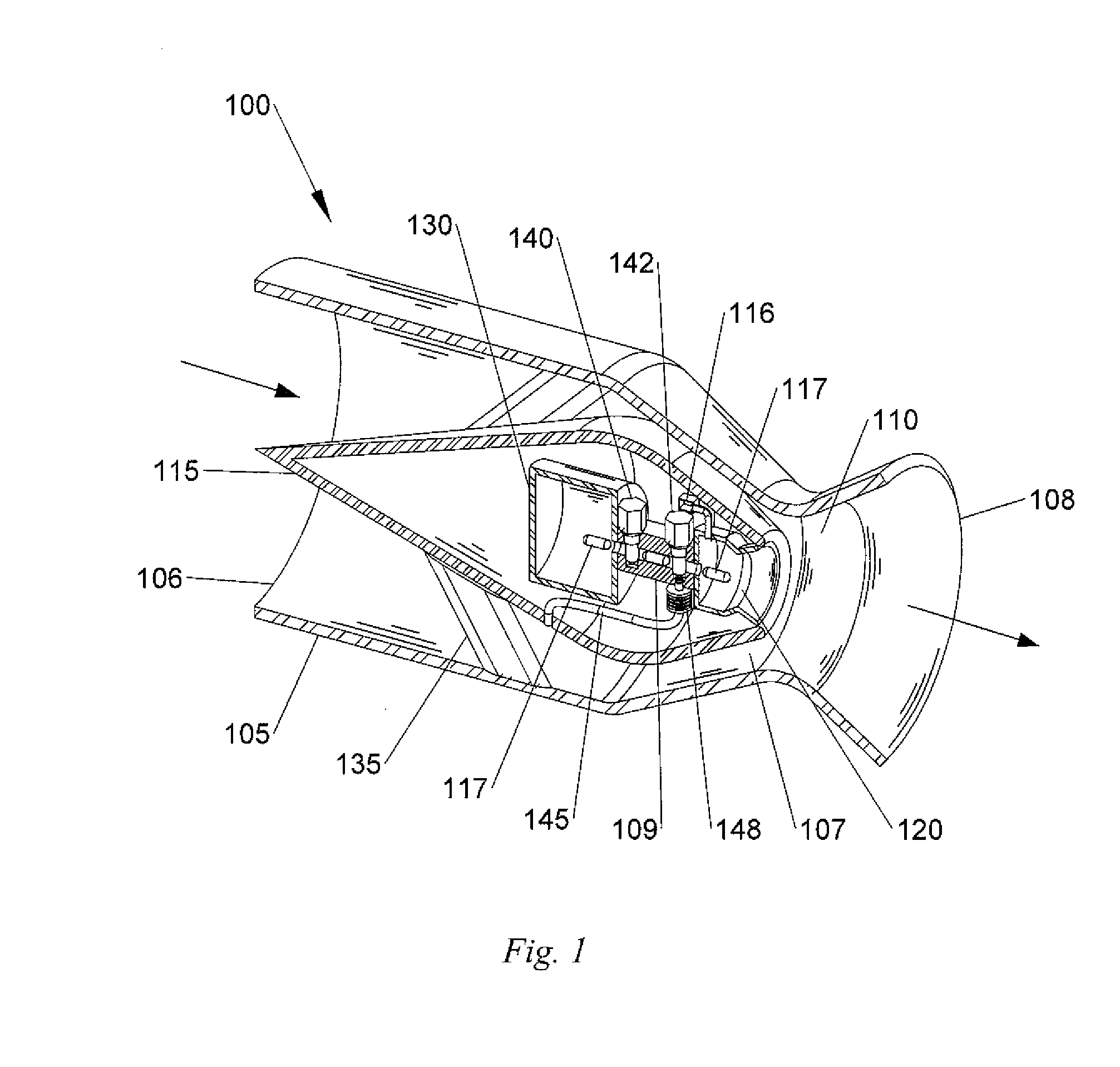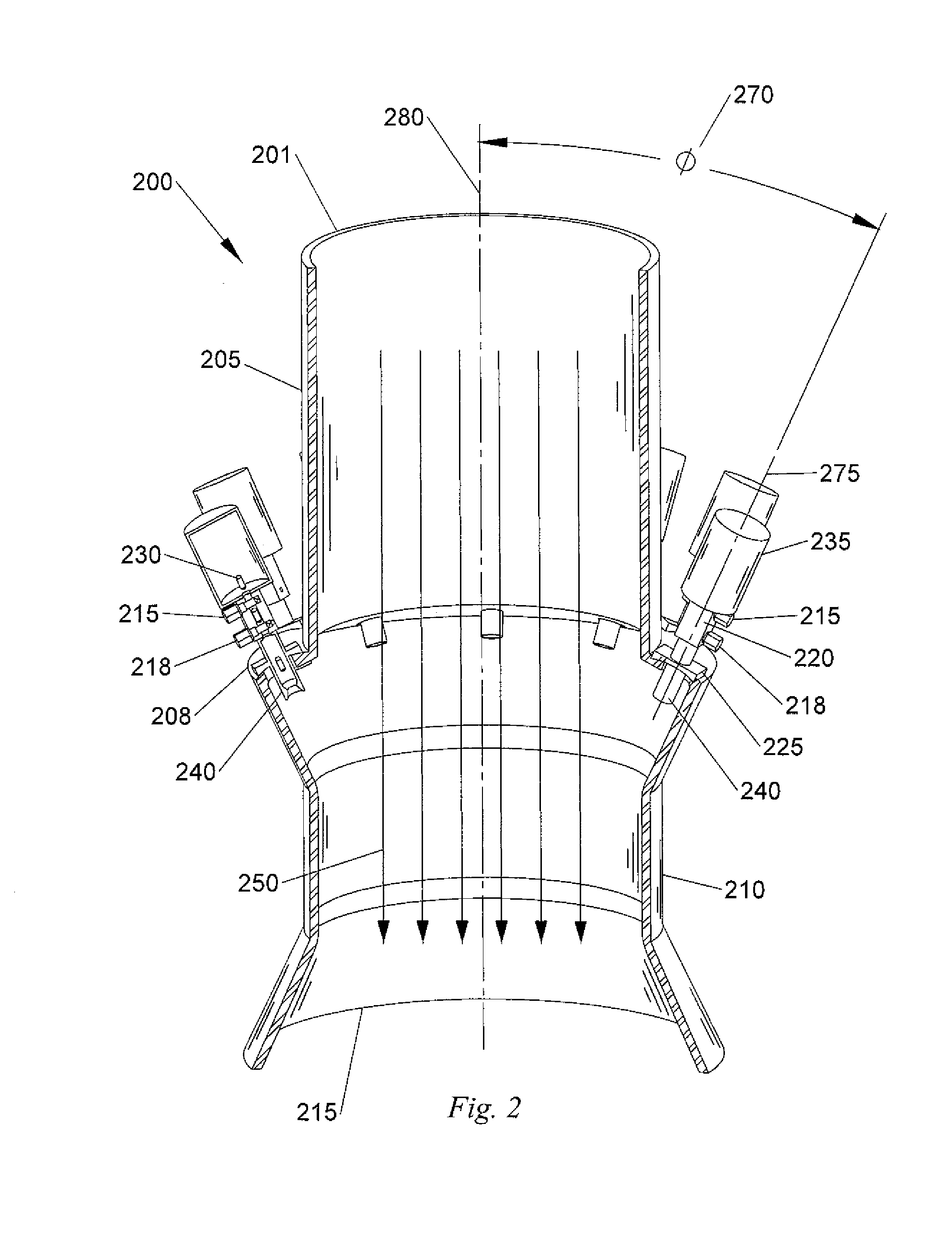Packaged propellant air-induced variable thrust rocket engine
- Summary
- Abstract
- Description
- Claims
- Application Information
AI Technical Summary
Benefits of technology
Problems solved by technology
Method used
Image
Examples
Embodiment Construction
[0023]FIG. 1 shown an air-induced rocket engine 100 using the teachings of the present invention. Air enters through front airflow inlet 106 and is divided by a central air divider 115 which supported in the airflow housing 105 by support struts 135. Located inside the central air divider 115 is an Energetic Fuel Packet (EFP) 117 storage compartment 130. This storage compartment can be replaced or supplemented by a separate storage area located outside the housing 105 with a connecting delivery tube not shown.
[0024]When thrust is needed, a backflow prevention valve 140 opens and an EFP 117 is injected through the air / fuel delivery manifold 109 into the combustion chamber 120. Photonic energy from a strobe light 116 or other means ignites the nano-aluminum particles contained in the water and the EFP 117, while in the combustion chamber 120. Very high temperature is created by the nano-energetic particles that convert the surrounding water to superheated steam, and also igniting othe...
PUM
 Login to View More
Login to View More Abstract
Description
Claims
Application Information
 Login to View More
Login to View More - R&D
- Intellectual Property
- Life Sciences
- Materials
- Tech Scout
- Unparalleled Data Quality
- Higher Quality Content
- 60% Fewer Hallucinations
Browse by: Latest US Patents, China's latest patents, Technical Efficacy Thesaurus, Application Domain, Technology Topic, Popular Technical Reports.
© 2025 PatSnap. All rights reserved.Legal|Privacy policy|Modern Slavery Act Transparency Statement|Sitemap|About US| Contact US: help@patsnap.com



